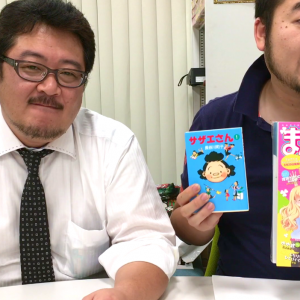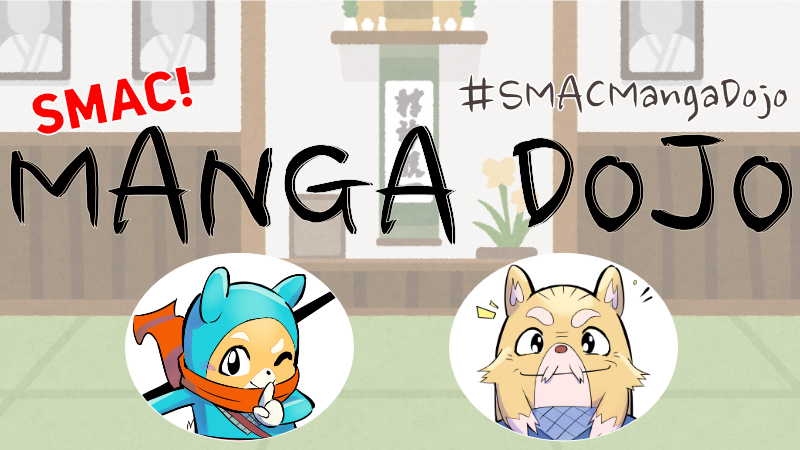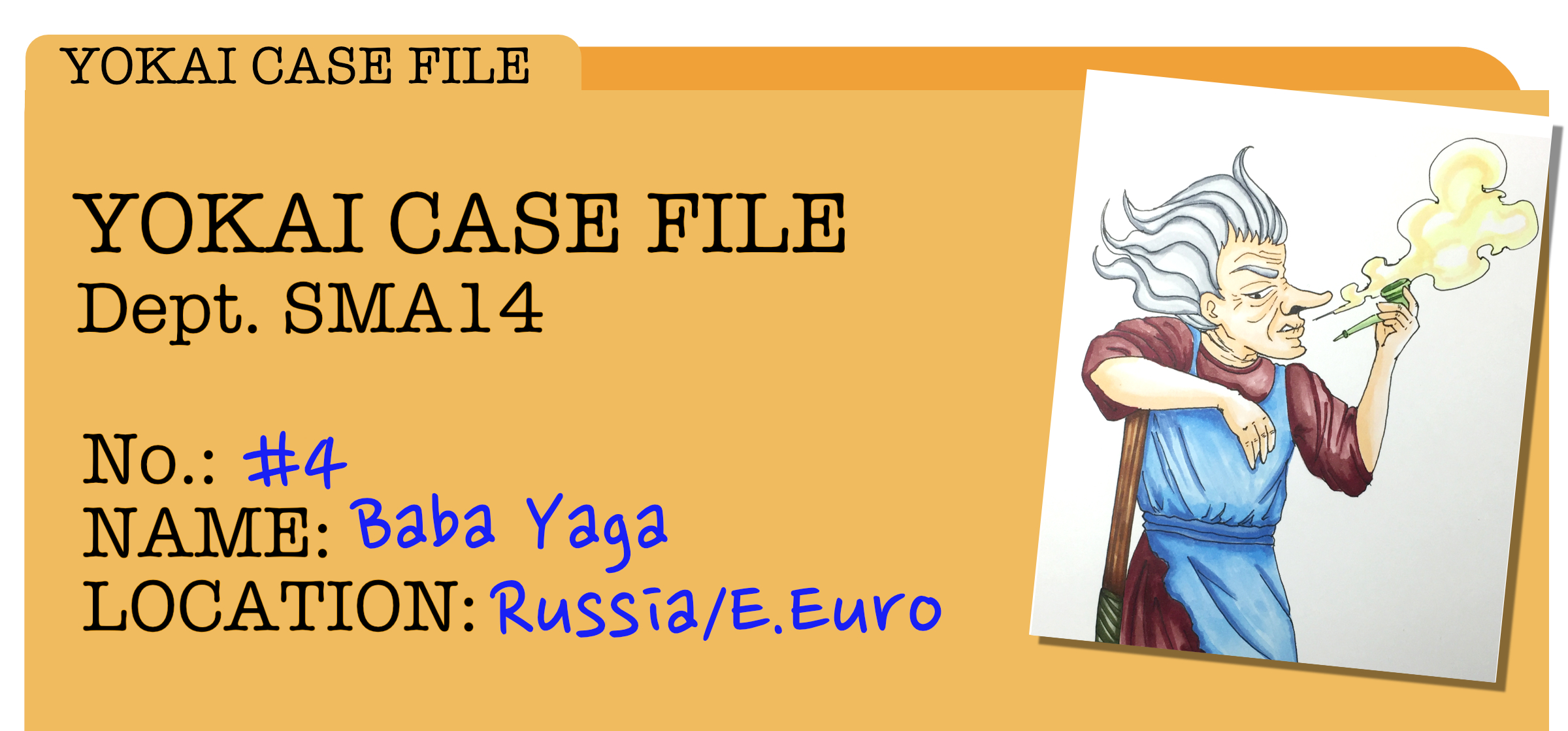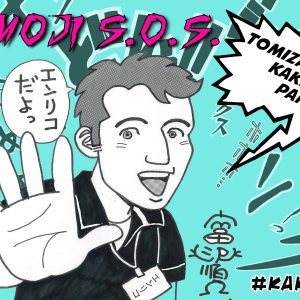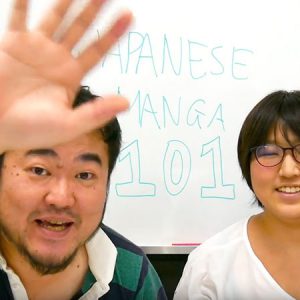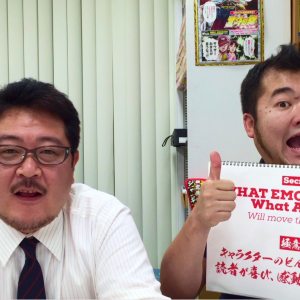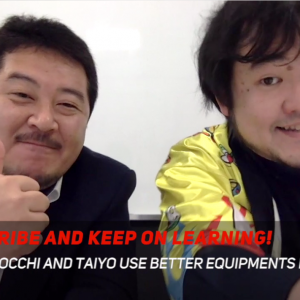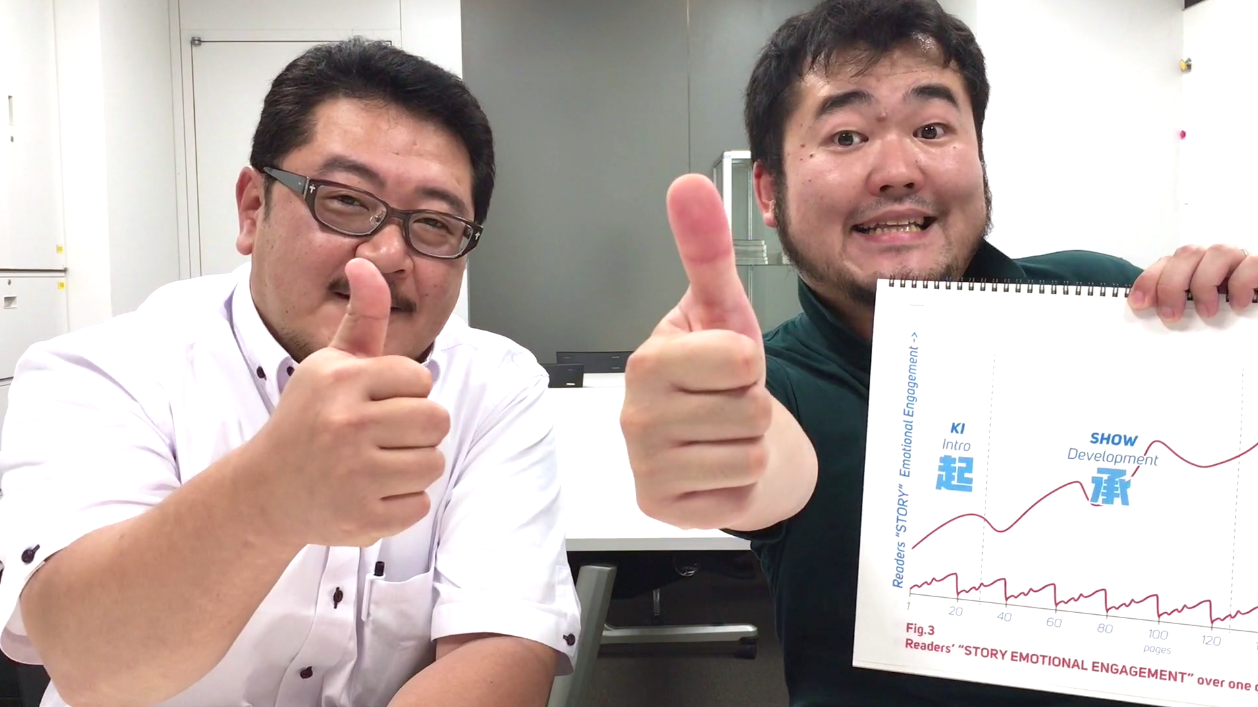
"Ki-sho-Ten-ketsu" at the bigger scale – Japanese Manga 101 #051
26/08/2016
10 min read
Hey guys!
It seems our episodes on “Ki Sho Ten Ketsu”, the 4 part construction technique, has been very new to many of you.
We received several questions too.
Let us show you one of them:
 So, to create long running series,
it is vital that EACH AND EVERY ONE of 20 pages or so chapter, must be an interesting and complete reading experience.
That means NO EXCUSES like these are allowed :
“This series will pick up pace at chapter 3”,
or “This secret be revealed in chapter 5 or later”,
or some NEW character abruptly entering the scene at the last page.
We know from experience, that those will receive very BAD reactions from the readers.
Readers feel betrayed, that the book they bought was an INCOMPLETE piece and NOT a COMPLETE entertainment.
Instead, to make the experience as entertaining and complete as possible,
Japanese pros utilized and sharpened the use of Ki-Sho-Ten-Ketsu,
As the building block for a complete chapter of 20 or so pages.
So, to create long running series,
it is vital that EACH AND EVERY ONE of 20 pages or so chapter, must be an interesting and complete reading experience.
That means NO EXCUSES like these are allowed :
“This series will pick up pace at chapter 3”,
or “This secret be revealed in chapter 5 or later”,
or some NEW character abruptly entering the scene at the last page.
We know from experience, that those will receive very BAD reactions from the readers.
Readers feel betrayed, that the book they bought was an INCOMPLETE piece and NOT a COMPLETE entertainment.
Instead, to make the experience as entertaining and complete as possible,
Japanese pros utilized and sharpened the use of Ki-Sho-Ten-Ketsu,
As the building block for a complete chapter of 20 or so pages.
 Example:
Intro – “Aha, so this chapter is about those guys”
Development – “I see, this is how story goes, I can kinda guess…”
Twister – “Wow the climax, whattttt this can’t be happening !?”
Conclusion – “Aha! I see that’s how that all happened. I Enjoyed it!”
We’ve learned from experience that it’s best NOT to divide it up into equal pieces,
But put emphasis on the part where SHO gradually develops.
Then turn into the beginning of the TWIST.
Taking time and pages, using many panels to gradually build momentum, introduce how the twist develops.
We said “Teasing the reader” here is the key.
No matter how surprising or amazingly drawn the “Twist” itself may be.
If it doesn’t come at a good pace, that is not just SLOW or FAST,
But at the right “timing”, with momentum of anticipation built up, up, and really UP.
Then strike with that event that turns all the momentum to strike the reader!
In summary, Use Development Sho, and Twisting TEN, to engage the readers, and build up momentum of anticipation.
Then using all that charged up anticipation, released all in one go! for the impactful concluding moment.
There is an easier way to remember this!
You’ve seen Dragon ball? Then you know, it’s NOT Kamehamehat.
It’s “KA-ME-HAA…. MEHHH…. HAAAAAAAAA!!!!!”
See how “charging” the energy makes “HAAA” all so more exciting?
This “Charging up” effect, to make the “RELEASE” more exciting, is called “TAME”, or Creating “MA” in Japanese.
Example:
Intro – “Aha, so this chapter is about those guys”
Development – “I see, this is how story goes, I can kinda guess…”
Twister – “Wow the climax, whattttt this can’t be happening !?”
Conclusion – “Aha! I see that’s how that all happened. I Enjoyed it!”
We’ve learned from experience that it’s best NOT to divide it up into equal pieces,
But put emphasis on the part where SHO gradually develops.
Then turn into the beginning of the TWIST.
Taking time and pages, using many panels to gradually build momentum, introduce how the twist develops.
We said “Teasing the reader” here is the key.
No matter how surprising or amazingly drawn the “Twist” itself may be.
If it doesn’t come at a good pace, that is not just SLOW or FAST,
But at the right “timing”, with momentum of anticipation built up, up, and really UP.
Then strike with that event that turns all the momentum to strike the reader!
In summary, Use Development Sho, and Twisting TEN, to engage the readers, and build up momentum of anticipation.
Then using all that charged up anticipation, released all in one go! for the impactful concluding moment.
There is an easier way to remember this!
You’ve seen Dragon ball? Then you know, it’s NOT Kamehamehat.
It’s “KA-ME-HAA…. MEHHH…. HAAAAAAAAA!!!!!”
See how “charging” the energy makes “HAAA” all so more exciting?
This “Charging up” effect, to make the “RELEASE” more exciting, is called “TAME”, or Creating “MA” in Japanese.

 It might help you to remember those words too.
Now, just one episode with Ki-Sho-Ten-Ketsu is already exciting to read,
But if you had 10 of those then it would be even more exciting isn’t it?
That is why we have Tanko-bons.
Separate volume of books of just one series, out of monthly anthology.
It might help you to remember those words too.
Now, just one episode with Ki-Sho-Ten-Ketsu is already exciting to read,
But if you had 10 of those then it would be even more exciting isn’t it?
That is why we have Tanko-bons.
Separate volume of books of just one series, out of monthly anthology.

 On average, each volume contains about 200 pages, 10 chapters worth.
We tried to visualise it as a graph, like this.
Put simply, each volume of Tanko-bon, contains 10 sets of “Ki-Sho-Ten-Ketsu”s.
On average, each volume contains about 200 pages, 10 chapters worth.
We tried to visualise it as a graph, like this.
Put simply, each volume of Tanko-bon, contains 10 sets of “Ki-Sho-Ten-Ketsu”s.
 Japanese pros try to put all the events as complete as possible within one chapter,
definition of goals, sub-plots and mysteries… Each chapter is complete in itself.
While overall, those chapters accumulates gradually building up the story towards bigger obstacles, mysteries and their answers.
THIS is the ideal form.
Each piece is an entertaining read in itself, but combined together,
10 chapters form a bigger Ki-Sho-Ten-Ketsu encompassing the whole volume.
As part of the bigger picture, there are many climaxes,
one in each chapter that builds up and create momentum to finally make THE BIG CLIMAX, Super effective and impactful.
THIS is the art of series Manga production.
So, back to the question.
Yes, you should utilise Ki-Sho-Ten-Ketsu,by creating small Ki-Sho-Ten-Ketsu every 20 pages,
and build-up a much bigger Ki-Sho-Ten-Ketsu, encompassing all 200 pages!
GOT IT?
Our manga god Osamu Tezuka sensei, said the most important skill in creating long story manga is
“The skill to create many short stories”.
If you can create one satisfying Ki-Sho-Ten-Ketsu in 20 pages, then you can create longer one-shots, of 40 or 60 pages.
To master that “Skill to create many short stories”,
many Japanese pros practiced many many 4 panel manga before succeeding with a series manga.
One such sensei, is Naoki Urasawa sensei.
He is well known for his complex plots and sub-plots,
and he has openly said on many occasions that Tezuka sensei has been his single most important influence.
He earned his success with manga series in style that “Each chapter is complete in itself”,
MASTER KEATON, YAWARA and HAPPY.
Those were so brilliant he gained many strong fanship.
Only then, he created long series manga, with much more continuation between chapters.
So, if you have a great grand idea for manga, of thousands of pages,
Why not try following Urasawa sense’s path and create many 4 panel manga?
Then create many one-shots of 20 pages that are complete in each chapter!
Next time, we are talking about much much smaller set of “Ki-Sho-Ten-Ketsu”.
Yes, each PAGE contains set of “Intro-Development-Twist and Conclusion”!
See you next time!
Japanese pros try to put all the events as complete as possible within one chapter,
definition of goals, sub-plots and mysteries… Each chapter is complete in itself.
While overall, those chapters accumulates gradually building up the story towards bigger obstacles, mysteries and their answers.
THIS is the ideal form.
Each piece is an entertaining read in itself, but combined together,
10 chapters form a bigger Ki-Sho-Ten-Ketsu encompassing the whole volume.
As part of the bigger picture, there are many climaxes,
one in each chapter that builds up and create momentum to finally make THE BIG CLIMAX, Super effective and impactful.
THIS is the art of series Manga production.
So, back to the question.
Yes, you should utilise Ki-Sho-Ten-Ketsu,by creating small Ki-Sho-Ten-Ketsu every 20 pages,
and build-up a much bigger Ki-Sho-Ten-Ketsu, encompassing all 200 pages!
GOT IT?
Our manga god Osamu Tezuka sensei, said the most important skill in creating long story manga is
“The skill to create many short stories”.
If you can create one satisfying Ki-Sho-Ten-Ketsu in 20 pages, then you can create longer one-shots, of 40 or 60 pages.
To master that “Skill to create many short stories”,
many Japanese pros practiced many many 4 panel manga before succeeding with a series manga.
One such sensei, is Naoki Urasawa sensei.
He is well known for his complex plots and sub-plots,
and he has openly said on many occasions that Tezuka sensei has been his single most important influence.
He earned his success with manga series in style that “Each chapter is complete in itself”,
MASTER KEATON, YAWARA and HAPPY.
Those were so brilliant he gained many strong fanship.
Only then, he created long series manga, with much more continuation between chapters.
So, if you have a great grand idea for manga, of thousands of pages,
Why not try following Urasawa sense’s path and create many 4 panel manga?
Then create many one-shots of 20 pages that are complete in each chapter!
Next time, we are talking about much much smaller set of “Ki-Sho-Ten-Ketsu”.
Yes, each PAGE contains set of “Intro-Development-Twist and Conclusion”!
See you next time!
«Question» This was a great episode! I see that Ki-sho-Ten-ketsu can also be applied to a long story, now if that story is divided into separate volumes, can Ki-sho-Ten-ketsu be applied to each volume at the same time? Thanks a for the excellent job that you do.So, can we utilize the four part technique for each Tankobon book volume? The answer is, of course we can! And it’s wise to do so. Before explaining how it works, let’s let us dig into the ways, how Japanese pros use Ki-Sho-Ten-Ketsu for long stories. In the case of Japanese series manga, that each new episode coming out on a weekly or monthly anthology magazine, NO MATTER how great the long story you plan, If ONE chapter is not interesting, the readers are not gonna like it. Meaning, it’s OVER for your manga.
 So, to create long running series,
it is vital that EACH AND EVERY ONE of 20 pages or so chapter, must be an interesting and complete reading experience.
That means NO EXCUSES like these are allowed :
“This series will pick up pace at chapter 3”,
or “This secret be revealed in chapter 5 or later”,
or some NEW character abruptly entering the scene at the last page.
We know from experience, that those will receive very BAD reactions from the readers.
Readers feel betrayed, that the book they bought was an INCOMPLETE piece and NOT a COMPLETE entertainment.
Instead, to make the experience as entertaining and complete as possible,
Japanese pros utilized and sharpened the use of Ki-Sho-Ten-Ketsu,
As the building block for a complete chapter of 20 or so pages.
So, to create long running series,
it is vital that EACH AND EVERY ONE of 20 pages or so chapter, must be an interesting and complete reading experience.
That means NO EXCUSES like these are allowed :
“This series will pick up pace at chapter 3”,
or “This secret be revealed in chapter 5 or later”,
or some NEW character abruptly entering the scene at the last page.
We know from experience, that those will receive very BAD reactions from the readers.
Readers feel betrayed, that the book they bought was an INCOMPLETE piece and NOT a COMPLETE entertainment.
Instead, to make the experience as entertaining and complete as possible,
Japanese pros utilized and sharpened the use of Ki-Sho-Ten-Ketsu,
As the building block for a complete chapter of 20 or so pages.
 Example:
Intro – “Aha, so this chapter is about those guys”
Development – “I see, this is how story goes, I can kinda guess…”
Twister – “Wow the climax, whattttt this can’t be happening !?”
Conclusion – “Aha! I see that’s how that all happened. I Enjoyed it!”
We’ve learned from experience that it’s best NOT to divide it up into equal pieces,
But put emphasis on the part where SHO gradually develops.
Then turn into the beginning of the TWIST.
Taking time and pages, using many panels to gradually build momentum, introduce how the twist develops.
We said “Teasing the reader” here is the key.
No matter how surprising or amazingly drawn the “Twist” itself may be.
If it doesn’t come at a good pace, that is not just SLOW or FAST,
But at the right “timing”, with momentum of anticipation built up, up, and really UP.
Then strike with that event that turns all the momentum to strike the reader!
In summary, Use Development Sho, and Twisting TEN, to engage the readers, and build up momentum of anticipation.
Then using all that charged up anticipation, released all in one go! for the impactful concluding moment.
There is an easier way to remember this!
You’ve seen Dragon ball? Then you know, it’s NOT Kamehamehat.
It’s “KA-ME-HAA…. MEHHH…. HAAAAAAAAA!!!!!”
See how “charging” the energy makes “HAAA” all so more exciting?
This “Charging up” effect, to make the “RELEASE” more exciting, is called “TAME”, or Creating “MA” in Japanese.
Example:
Intro – “Aha, so this chapter is about those guys”
Development – “I see, this is how story goes, I can kinda guess…”
Twister – “Wow the climax, whattttt this can’t be happening !?”
Conclusion – “Aha! I see that’s how that all happened. I Enjoyed it!”
We’ve learned from experience that it’s best NOT to divide it up into equal pieces,
But put emphasis on the part where SHO gradually develops.
Then turn into the beginning of the TWIST.
Taking time and pages, using many panels to gradually build momentum, introduce how the twist develops.
We said “Teasing the reader” here is the key.
No matter how surprising or amazingly drawn the “Twist” itself may be.
If it doesn’t come at a good pace, that is not just SLOW or FAST,
But at the right “timing”, with momentum of anticipation built up, up, and really UP.
Then strike with that event that turns all the momentum to strike the reader!
In summary, Use Development Sho, and Twisting TEN, to engage the readers, and build up momentum of anticipation.
Then using all that charged up anticipation, released all in one go! for the impactful concluding moment.
There is an easier way to remember this!
You’ve seen Dragon ball? Then you know, it’s NOT Kamehamehat.
It’s “KA-ME-HAA…. MEHHH…. HAAAAAAAAA!!!!!”
See how “charging” the energy makes “HAAA” all so more exciting?
This “Charging up” effect, to make the “RELEASE” more exciting, is called “TAME”, or Creating “MA” in Japanese.

 It might help you to remember those words too.
Now, just one episode with Ki-Sho-Ten-Ketsu is already exciting to read,
But if you had 10 of those then it would be even more exciting isn’t it?
That is why we have Tanko-bons.
Separate volume of books of just one series, out of monthly anthology.
It might help you to remember those words too.
Now, just one episode with Ki-Sho-Ten-Ketsu is already exciting to read,
But if you had 10 of those then it would be even more exciting isn’t it?
That is why we have Tanko-bons.
Separate volume of books of just one series, out of monthly anthology.

 On average, each volume contains about 200 pages, 10 chapters worth.
We tried to visualise it as a graph, like this.
Put simply, each volume of Tanko-bon, contains 10 sets of “Ki-Sho-Ten-Ketsu”s.
On average, each volume contains about 200 pages, 10 chapters worth.
We tried to visualise it as a graph, like this.
Put simply, each volume of Tanko-bon, contains 10 sets of “Ki-Sho-Ten-Ketsu”s.
 Japanese pros try to put all the events as complete as possible within one chapter,
definition of goals, sub-plots and mysteries… Each chapter is complete in itself.
While overall, those chapters accumulates gradually building up the story towards bigger obstacles, mysteries and their answers.
THIS is the ideal form.
Each piece is an entertaining read in itself, but combined together,
10 chapters form a bigger Ki-Sho-Ten-Ketsu encompassing the whole volume.
As part of the bigger picture, there are many climaxes,
one in each chapter that builds up and create momentum to finally make THE BIG CLIMAX, Super effective and impactful.
THIS is the art of series Manga production.
So, back to the question.
Yes, you should utilise Ki-Sho-Ten-Ketsu,by creating small Ki-Sho-Ten-Ketsu every 20 pages,
and build-up a much bigger Ki-Sho-Ten-Ketsu, encompassing all 200 pages!
GOT IT?
Our manga god Osamu Tezuka sensei, said the most important skill in creating long story manga is
“The skill to create many short stories”.
If you can create one satisfying Ki-Sho-Ten-Ketsu in 20 pages, then you can create longer one-shots, of 40 or 60 pages.
To master that “Skill to create many short stories”,
many Japanese pros practiced many many 4 panel manga before succeeding with a series manga.
One such sensei, is Naoki Urasawa sensei.
He is well known for his complex plots and sub-plots,
and he has openly said on many occasions that Tezuka sensei has been his single most important influence.
He earned his success with manga series in style that “Each chapter is complete in itself”,
MASTER KEATON, YAWARA and HAPPY.
Those were so brilliant he gained many strong fanship.
Only then, he created long series manga, with much more continuation between chapters.
So, if you have a great grand idea for manga, of thousands of pages,
Why not try following Urasawa sense’s path and create many 4 panel manga?
Then create many one-shots of 20 pages that are complete in each chapter!
Next time, we are talking about much much smaller set of “Ki-Sho-Ten-Ketsu”.
Yes, each PAGE contains set of “Intro-Development-Twist and Conclusion”!
See you next time!
Japanese pros try to put all the events as complete as possible within one chapter,
definition of goals, sub-plots and mysteries… Each chapter is complete in itself.
While overall, those chapters accumulates gradually building up the story towards bigger obstacles, mysteries and their answers.
THIS is the ideal form.
Each piece is an entertaining read in itself, but combined together,
10 chapters form a bigger Ki-Sho-Ten-Ketsu encompassing the whole volume.
As part of the bigger picture, there are many climaxes,
one in each chapter that builds up and create momentum to finally make THE BIG CLIMAX, Super effective and impactful.
THIS is the art of series Manga production.
So, back to the question.
Yes, you should utilise Ki-Sho-Ten-Ketsu,by creating small Ki-Sho-Ten-Ketsu every 20 pages,
and build-up a much bigger Ki-Sho-Ten-Ketsu, encompassing all 200 pages!
GOT IT?
Our manga god Osamu Tezuka sensei, said the most important skill in creating long story manga is
“The skill to create many short stories”.
If you can create one satisfying Ki-Sho-Ten-Ketsu in 20 pages, then you can create longer one-shots, of 40 or 60 pages.
To master that “Skill to create many short stories”,
many Japanese pros practiced many many 4 panel manga before succeeding with a series manga.
One such sensei, is Naoki Urasawa sensei.
He is well known for his complex plots and sub-plots,
and he has openly said on many occasions that Tezuka sensei has been his single most important influence.
He earned his success with manga series in style that “Each chapter is complete in itself”,
MASTER KEATON, YAWARA and HAPPY.
Those were so brilliant he gained many strong fanship.
Only then, he created long series manga, with much more continuation between chapters.
So, if you have a great grand idea for manga, of thousands of pages,
Why not try following Urasawa sense’s path and create many 4 panel manga?
Then create many one-shots of 20 pages that are complete in each chapter!
Next time, we are talking about much much smaller set of “Ki-Sho-Ten-Ketsu”.
Yes, each PAGE contains set of “Intro-Development-Twist and Conclusion”!
See you next time!





